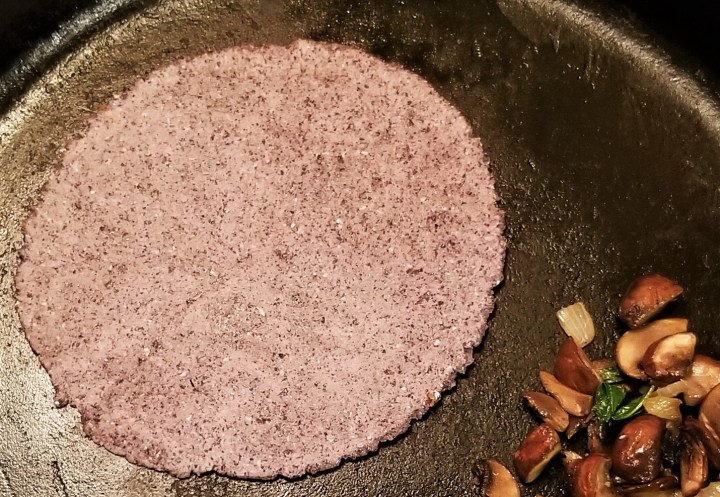
As mentioned in my previous post, tlaxcalli is the pre-Hispanic name for corn tortillas, and the name Tlaxcala, the smallest Mexican state, means “place of corn bread (tortillas).” Tlaxcala is a strong producer of corn, and close to 25 varieties are cultivated in the state. Perhaps because the Tlaxcalteca people made an alliance with the Spaniards, many of their ancient traditions, words and cooking methods survived the gore of the Spanish conquest, and making tortillas from grain to griddle is still an everyday activity for many Tlaxcalteca families; they make them in colours that come natural from the grain, some familiar, such as white, or yellow, and others less known, such as blue, pink, black or red:
There are also some interesting combinations of corn with other ingredients, such as trigo (wheat), arvejón (dry peas), or nopales (paddle cactus), the last ones becoming more popular nationwide due to their health properties.
I went on a quest to find blue corn flour to make a batch of tortillas at home. Coincidentally, I found a business in Toronto called “La Tortillería” (“The tortilla store”) with online shopping and a nice selection of Mexican dry peppers, corn flour for tortillas and tamales, salsas, etc. They did carry blue corn flour, but the shipping fees were too high for me; I had a chance to go in person to their store on 1009 Dufferin St. (Toronto, ON M6H 4B2; 1(416)901-7842). The place has a few spots to park on one side, where a nice mural of Frida Kahlo may be admired; inside there are tables and a counter, offering tacos and other tortilla dishes, and beverages; the grocery section is at the back, with a pantry for dry goods, as well as two refrigerators, one with fresh salsas, and their own Mexican chorizo (including soy):
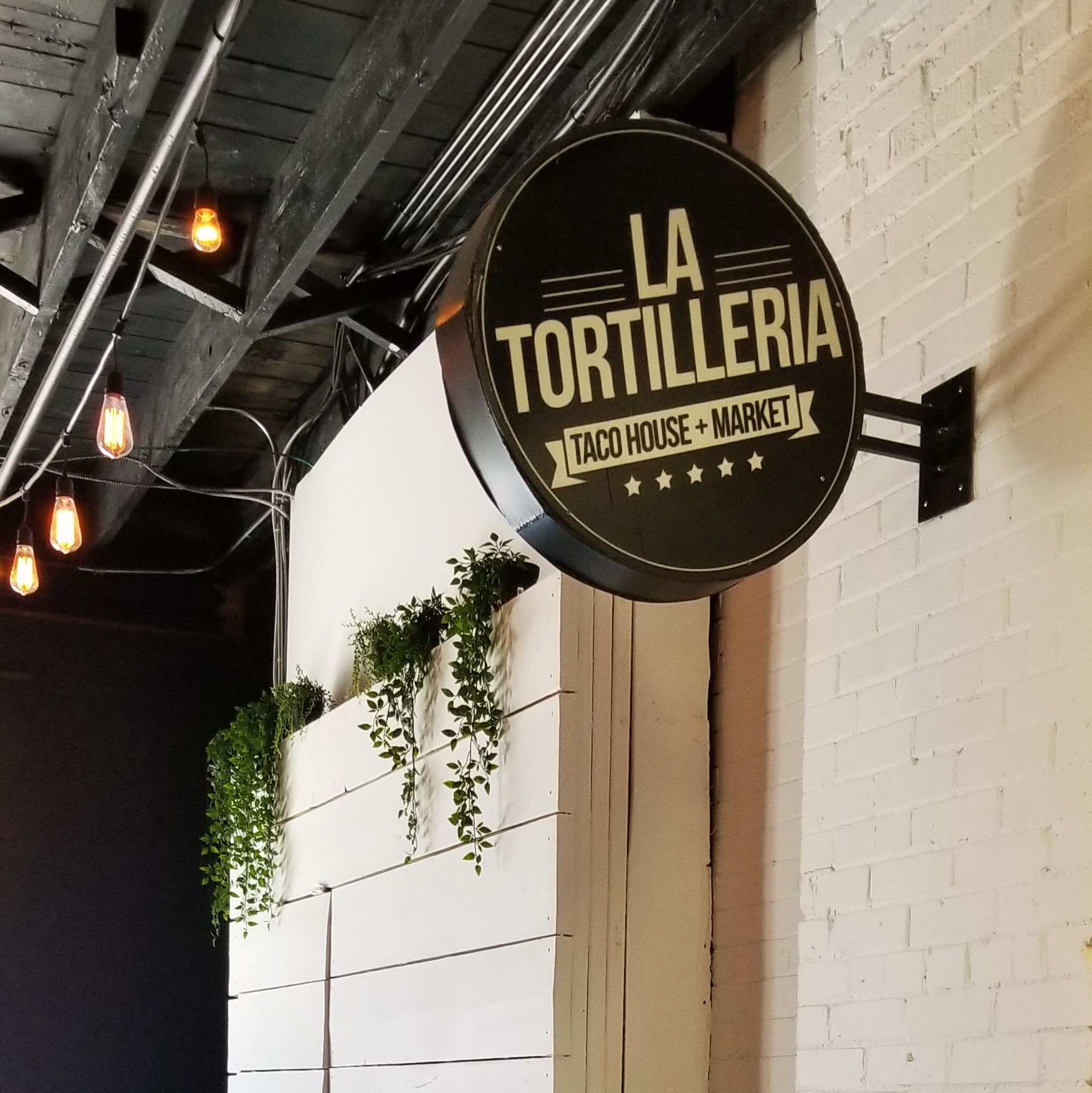
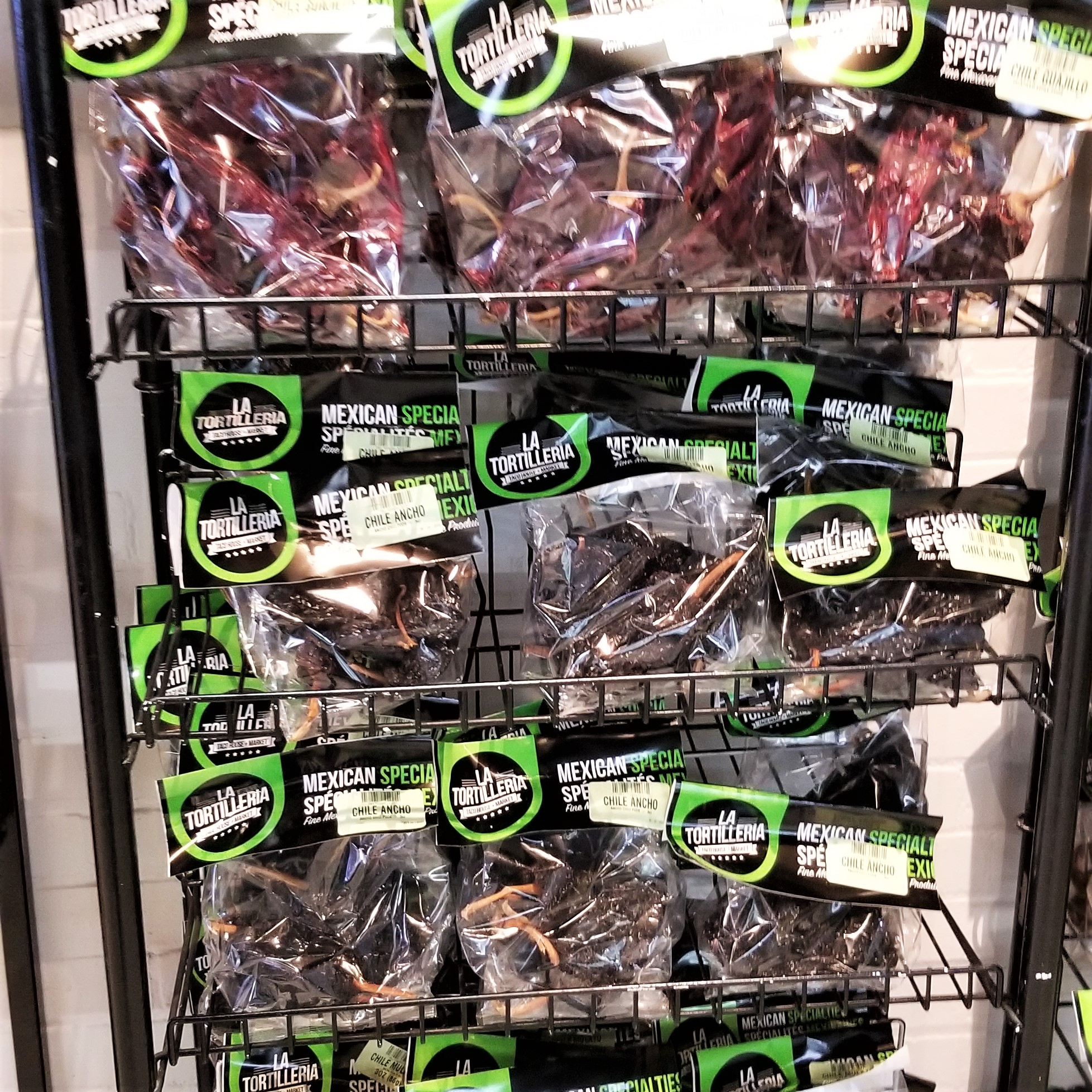
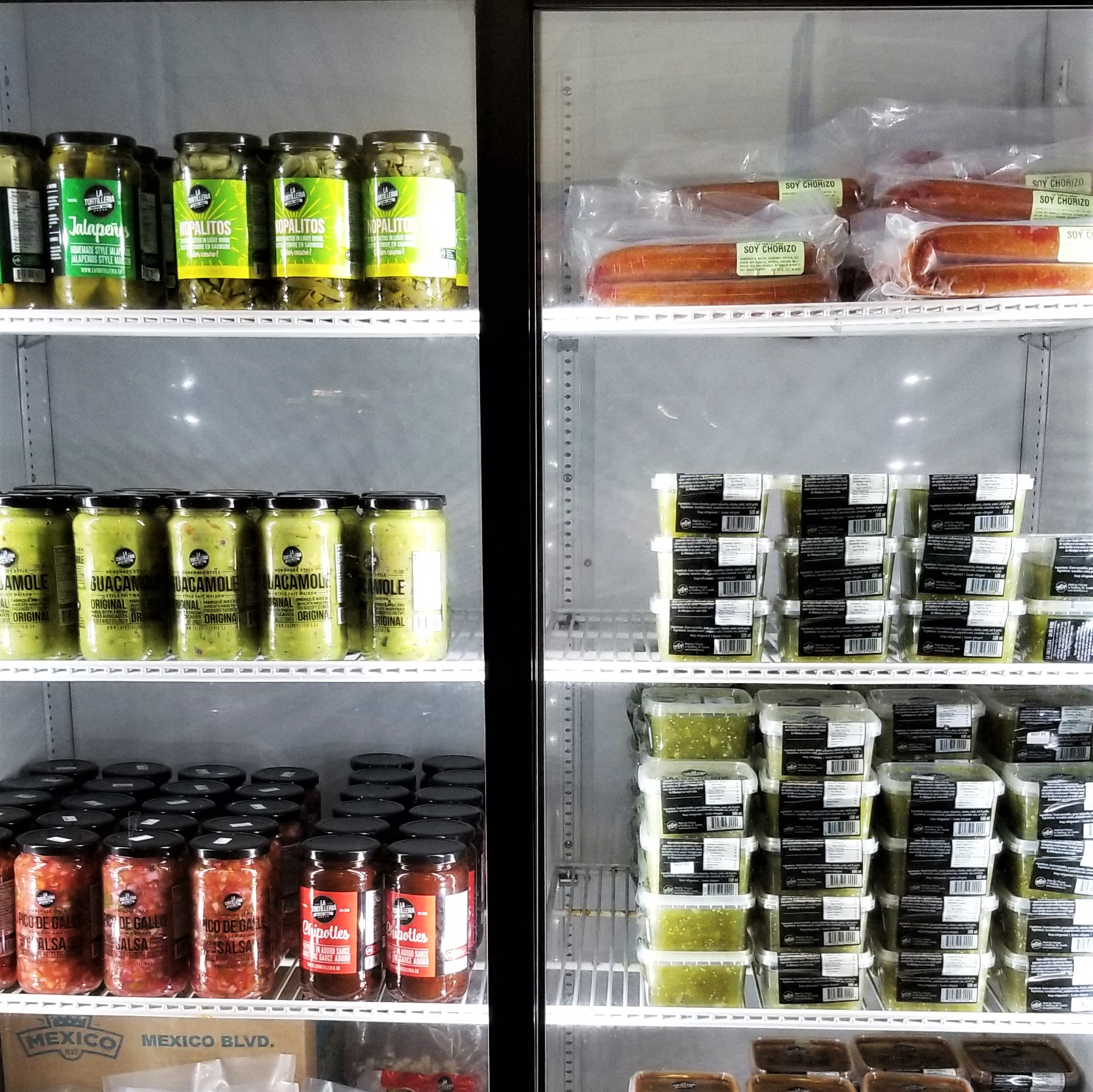
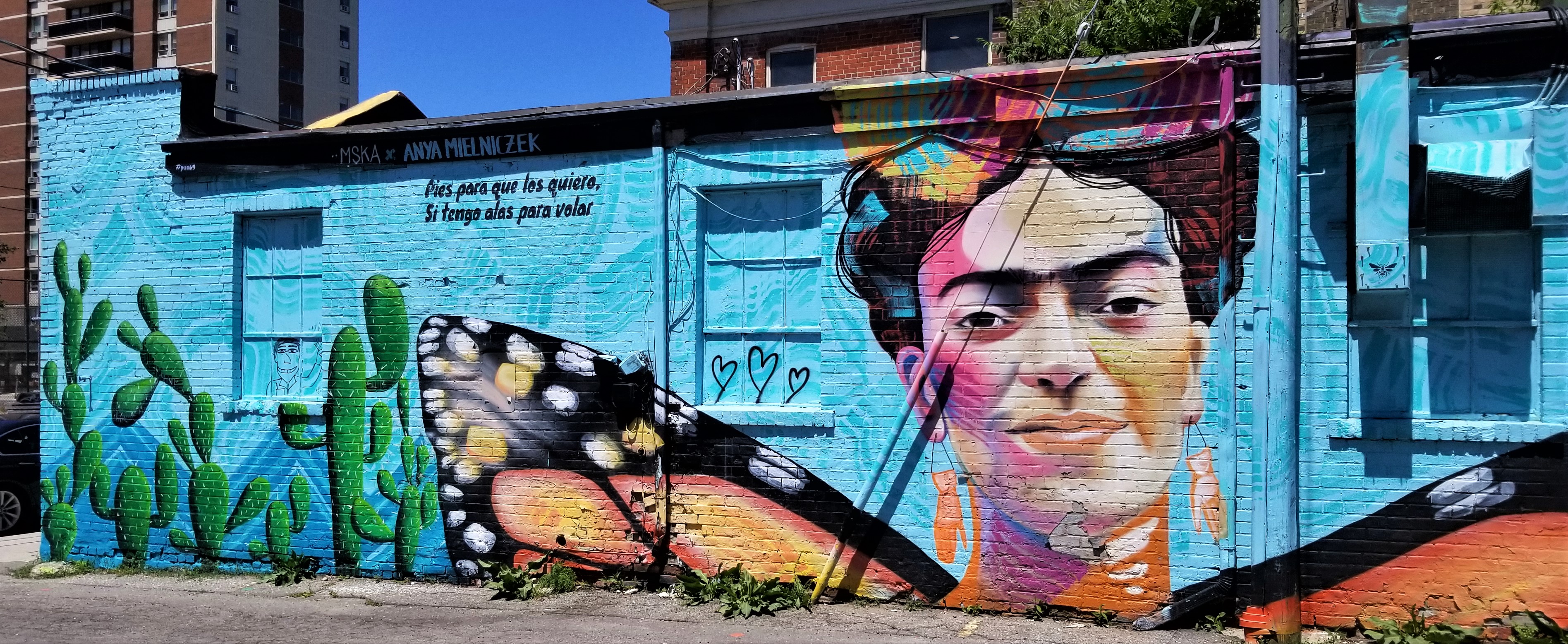
The corn flour supply included white, yellow and tamale options, but alas, their blue corn flour was sold out (photo left). In the second fridge, they had Mexican Cotija and panela cheese, and all sorts of freshly made tortillas, including blue, green and wheat (photo below, right):
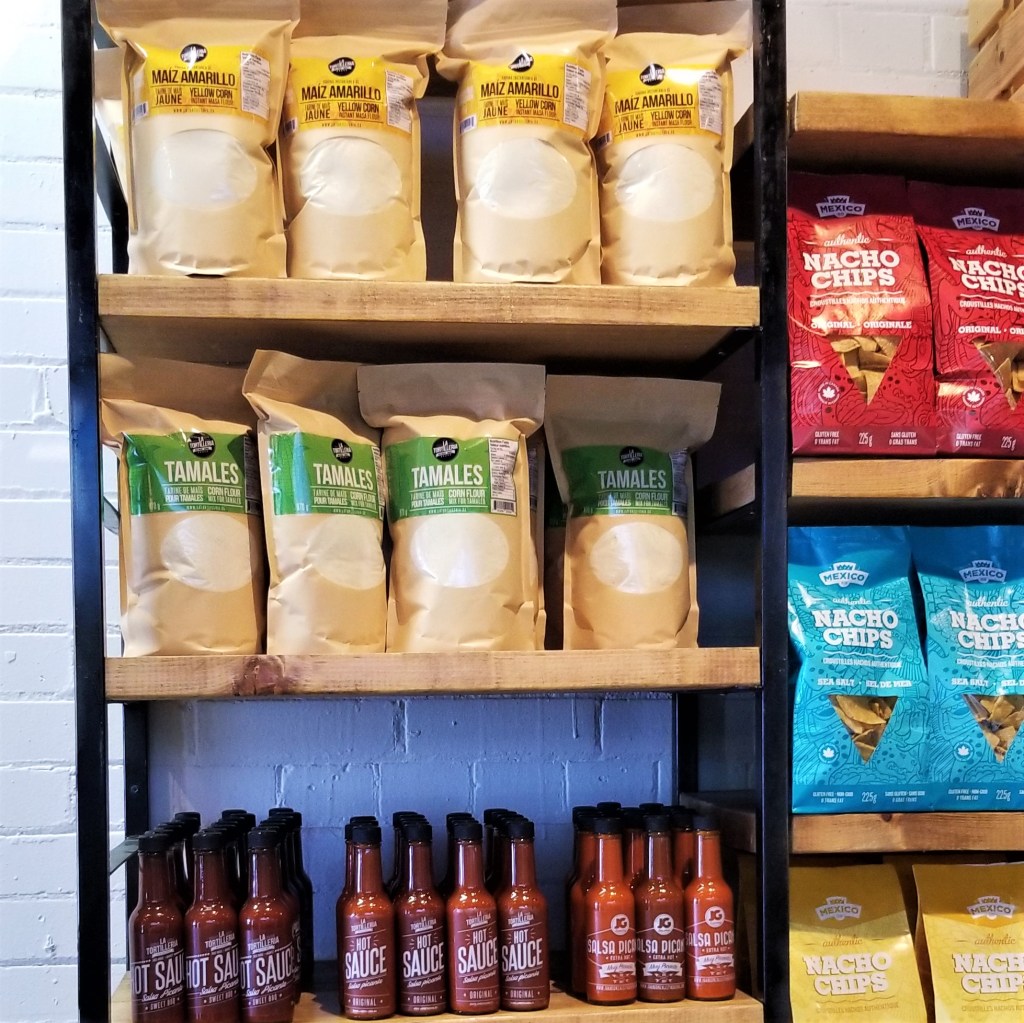
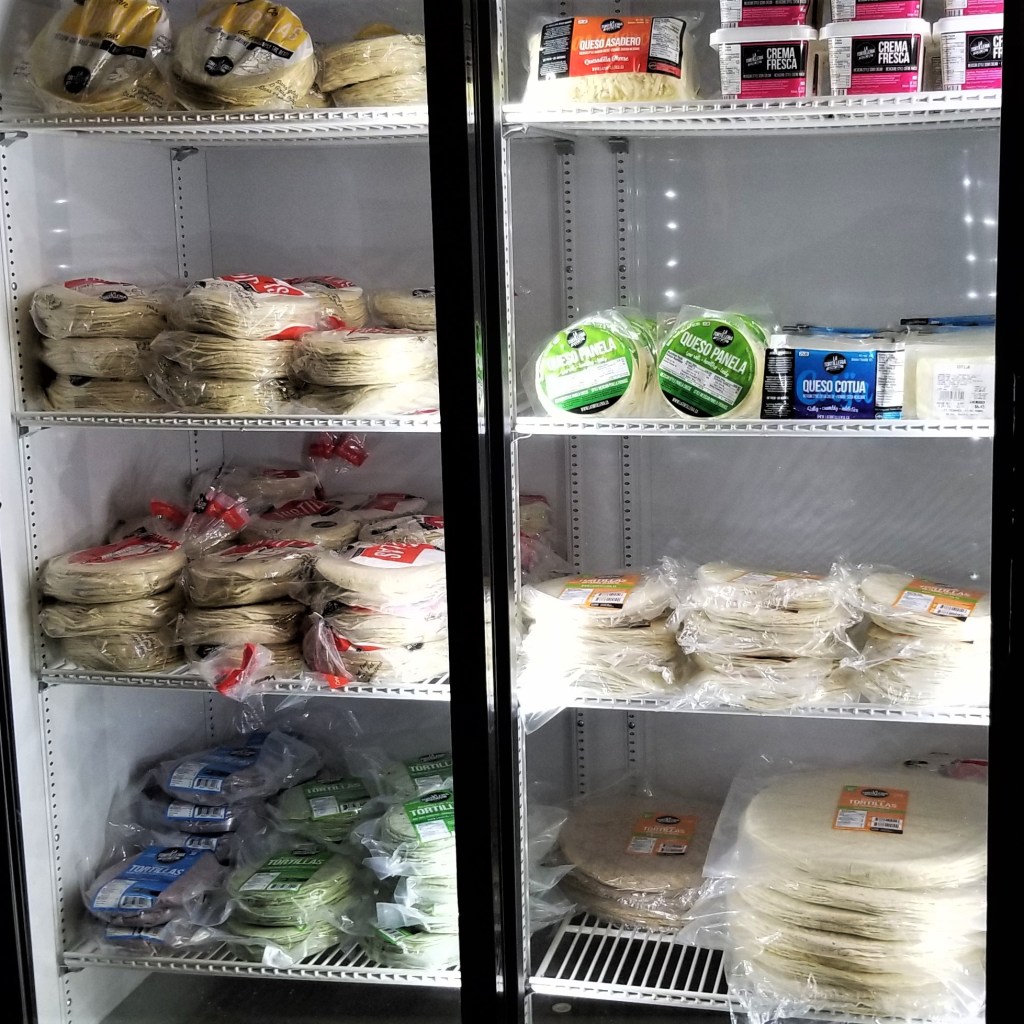
As a consolation, I got a pack of green tortillas (cactus and corn, like in Tlaxcala) and one of blue tortillas, the next best thing to finding the flour:
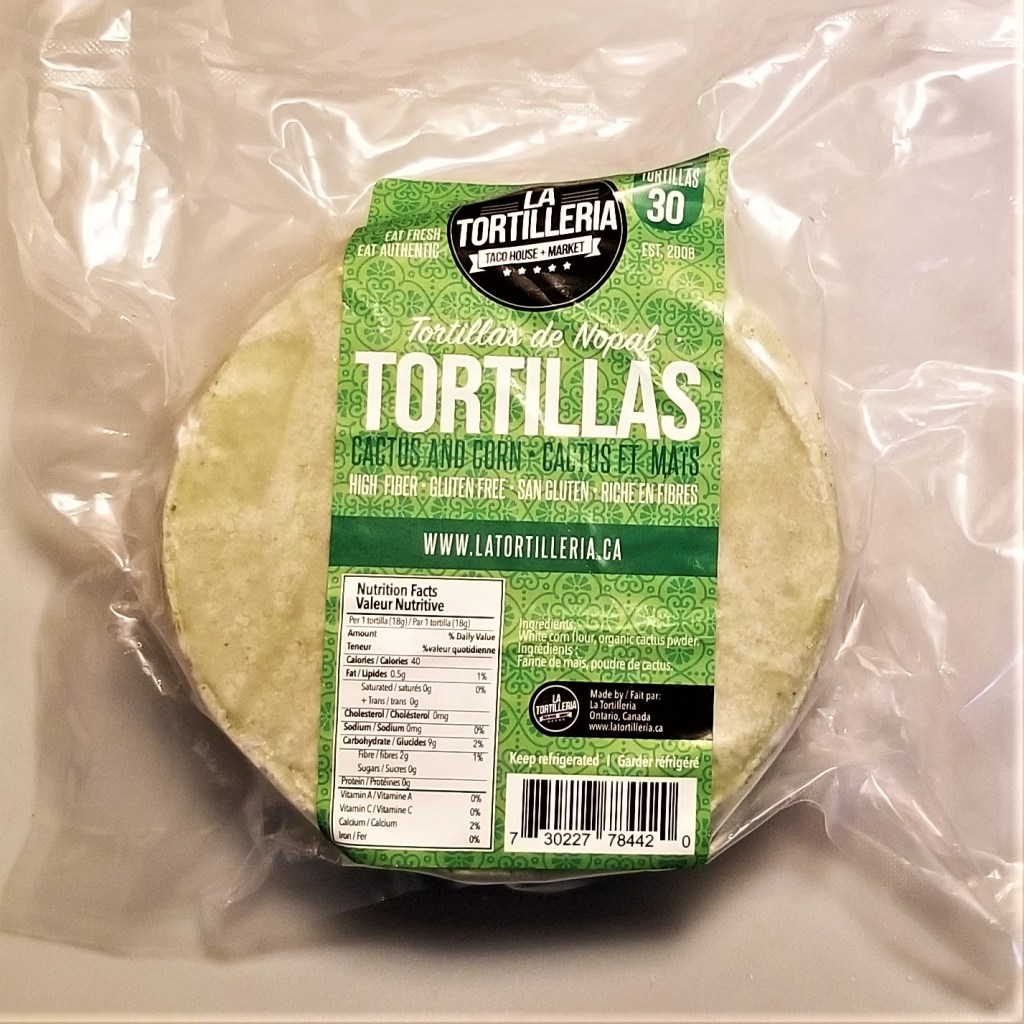
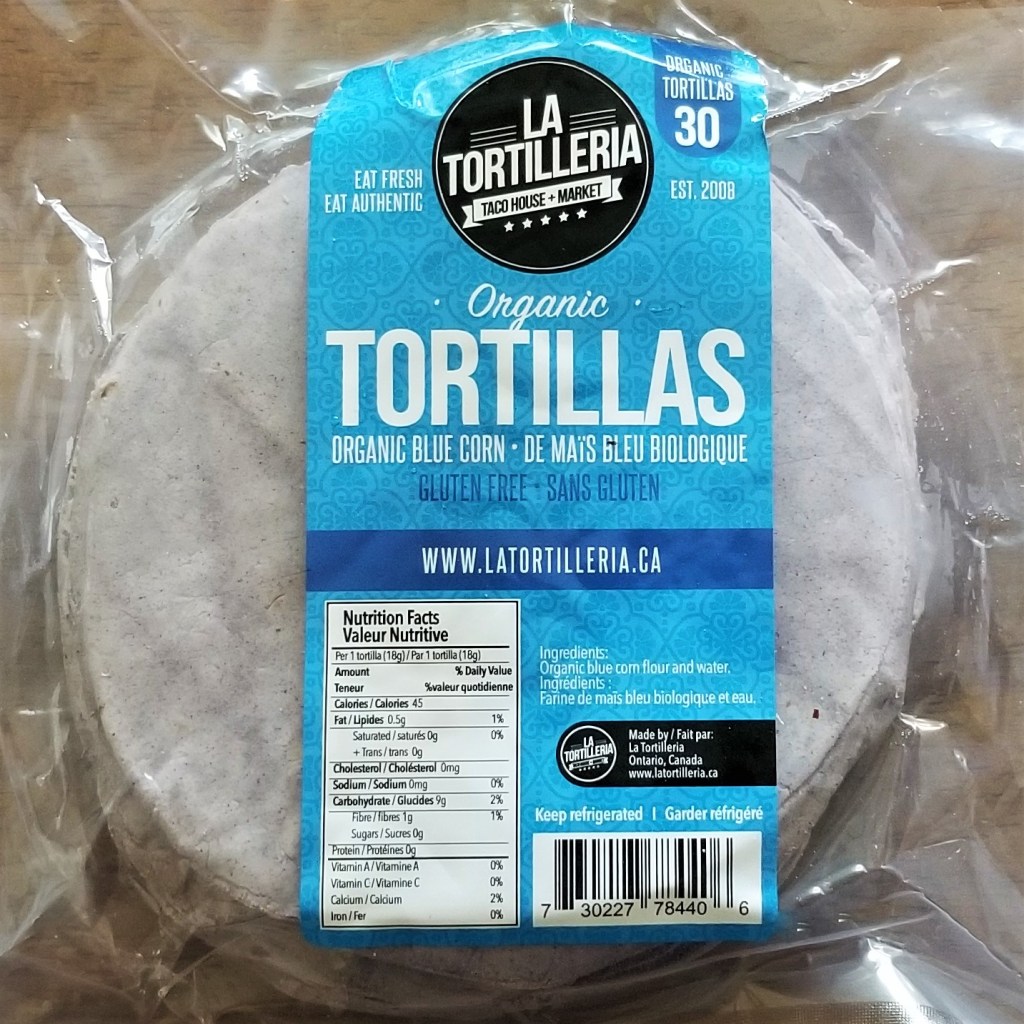
That same day, I dropped by another store, “El Rancherito” (“The Little Rancher”; 891 Wilson Avenue, North York, ON M3K 1E6), a Hispanic store, to buy some other Mexican groceries, and Eureka! I spotted the last bag of blue corn flour, Maseca Azul™ (photo below, left). This brand is not organic, but the reviews I had seen online were generally positive, just some people complaining more about short period before expiry date or bad recipe directions on the package. I thought the short period before expiry date was a good thing, meaning that the flour would not have a lot of preservatives. Once back at home, I made a batch of dough right away, and it seemed very nice, not too processed, and the colour looked natural, not blue but more of a purplish grey, with dark speckles (photo below, right):
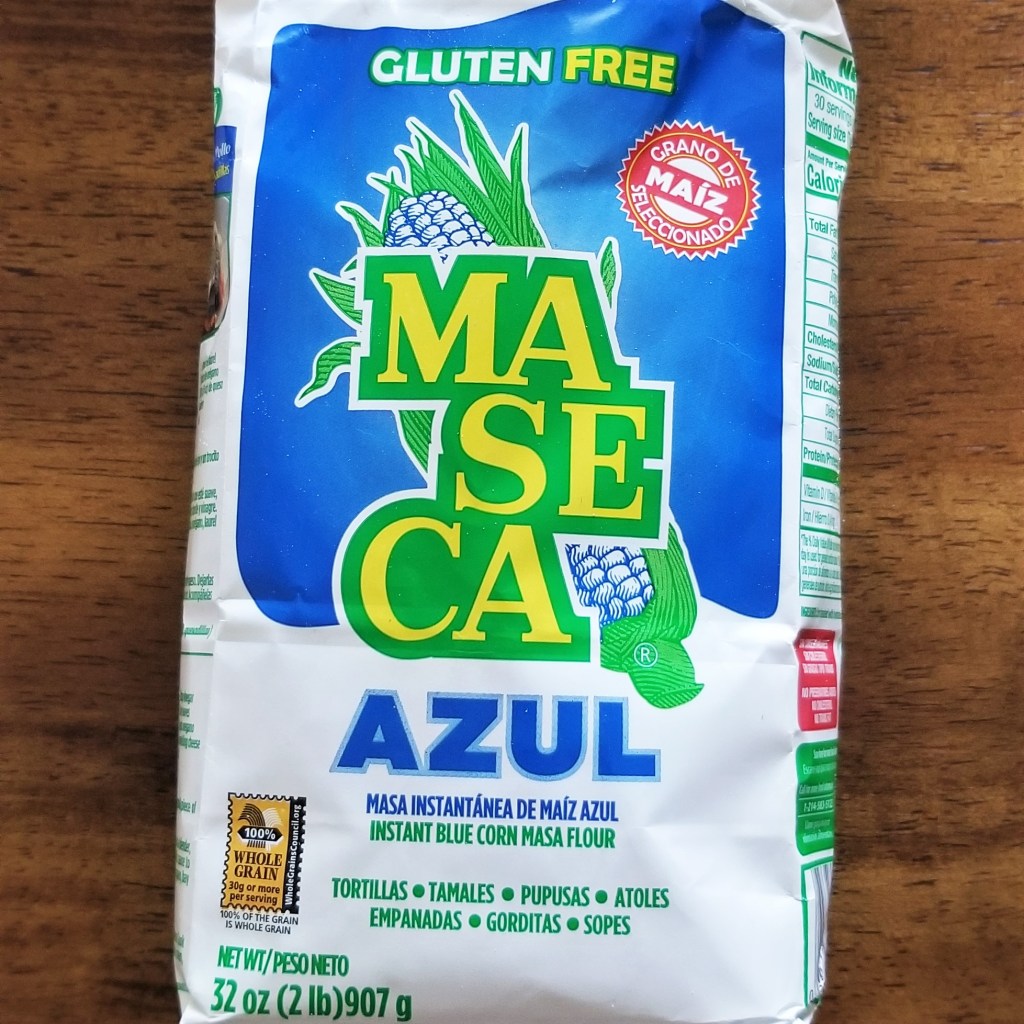
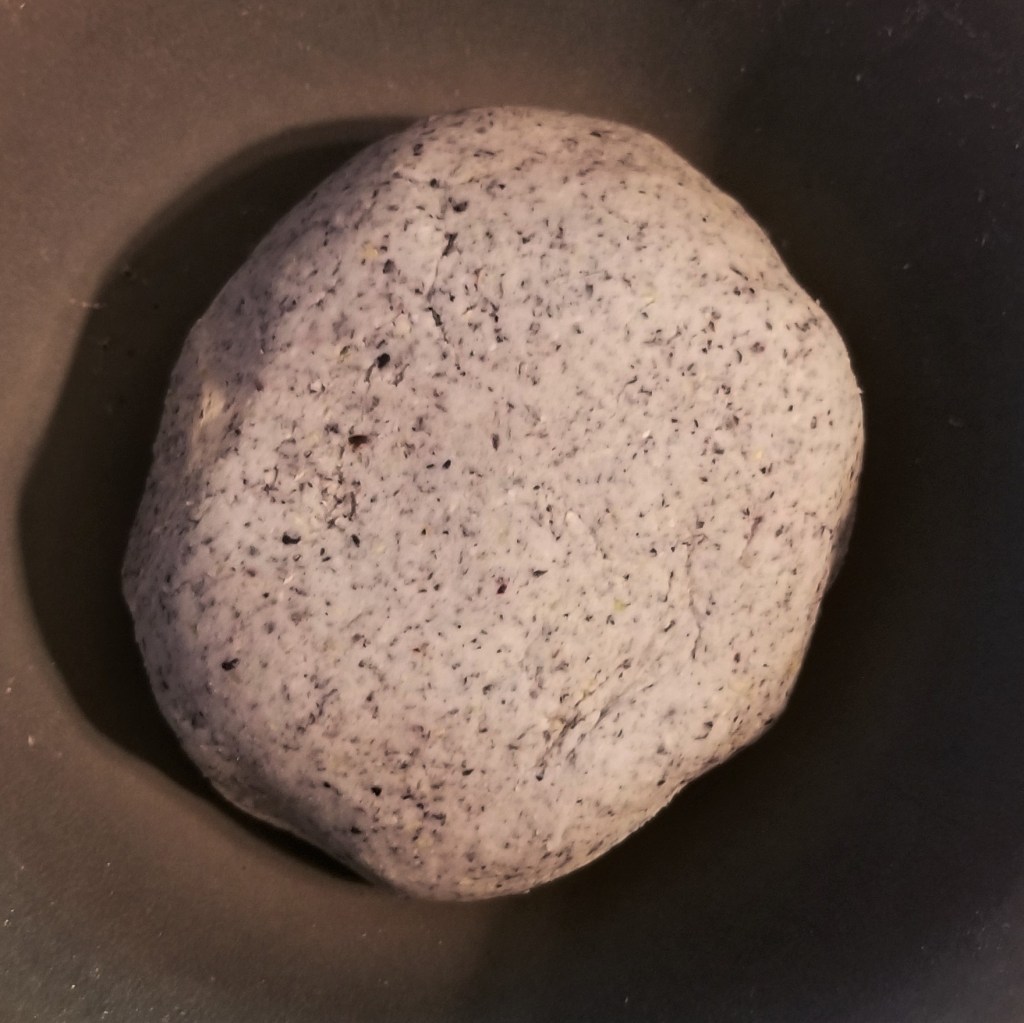
Some reviews said the dough was brittle, and hard to handle; the secret is to use enough water, and allow the dough to rest for at least half an hour, for full hydration of the flour particles.
After that, I managed to form small portions into balls with my hands, and then flatten them in a tortilla press lined with a plastic bag (photo below, left). A hot flat griddle (comal) or an iron skillet, over medium heat, is all that’s needed to cook the disks (photo below, right); flip after a few seconds, then flip again after one minute, to develop the characteristic thin film on corn tortillas, and cook on both sides:
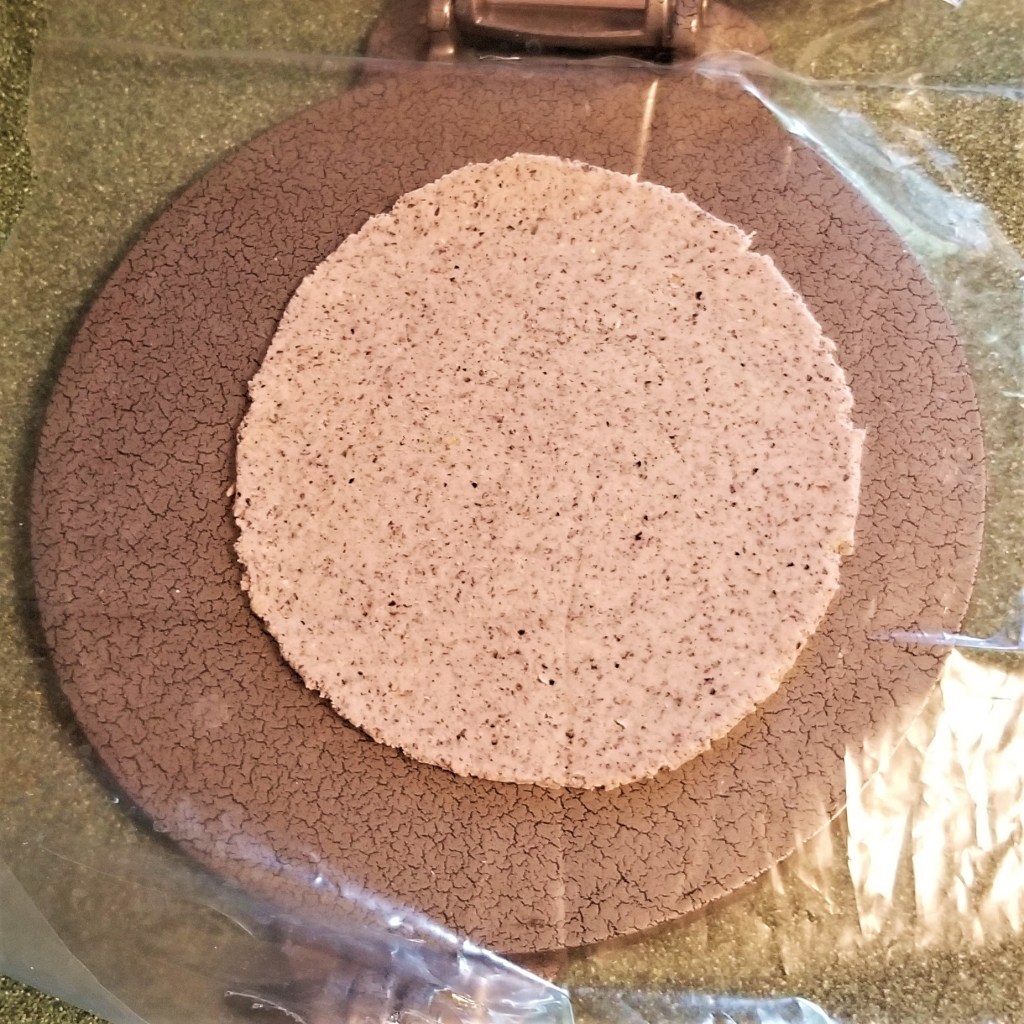
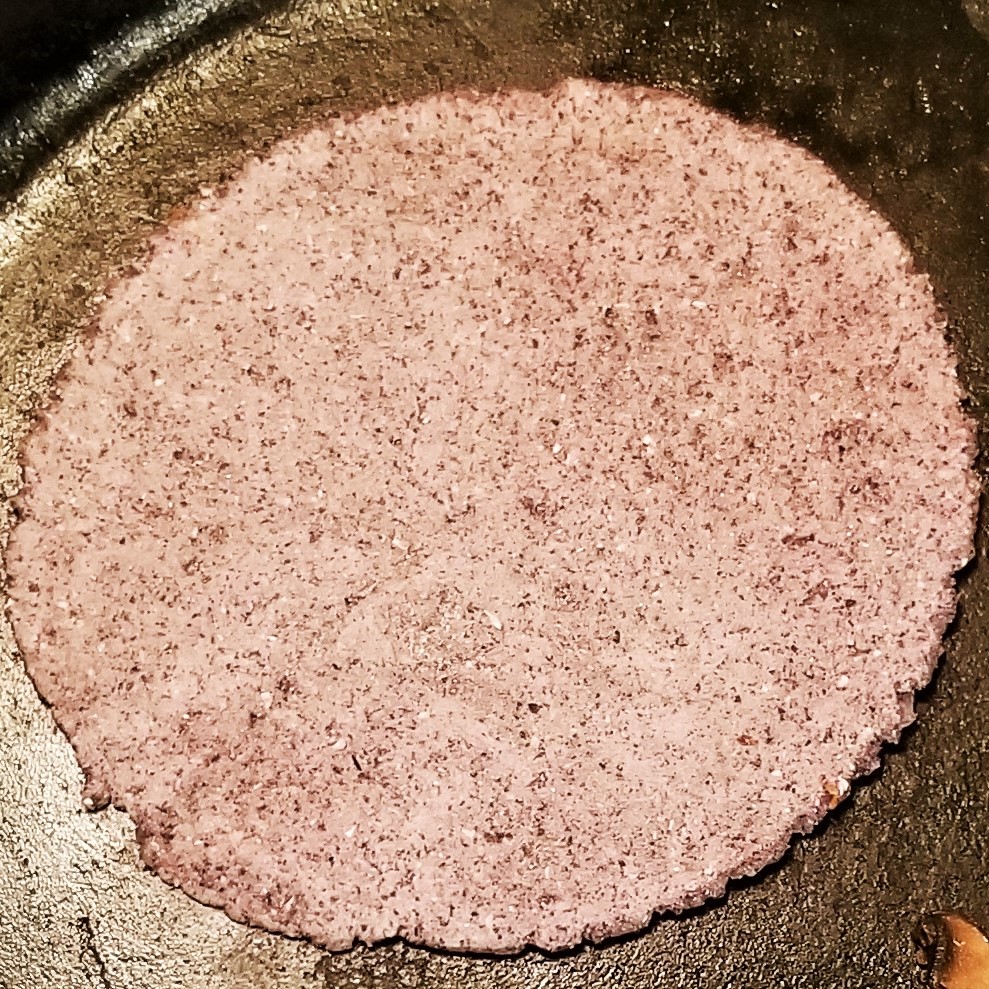
I also opened the package of organic blue tortillas, and made tacos with some chicken and stir-fried veggies, side by side, to compare. In the photo below, fresh blue corn tortillas, homemade on the left, and from package on the right:
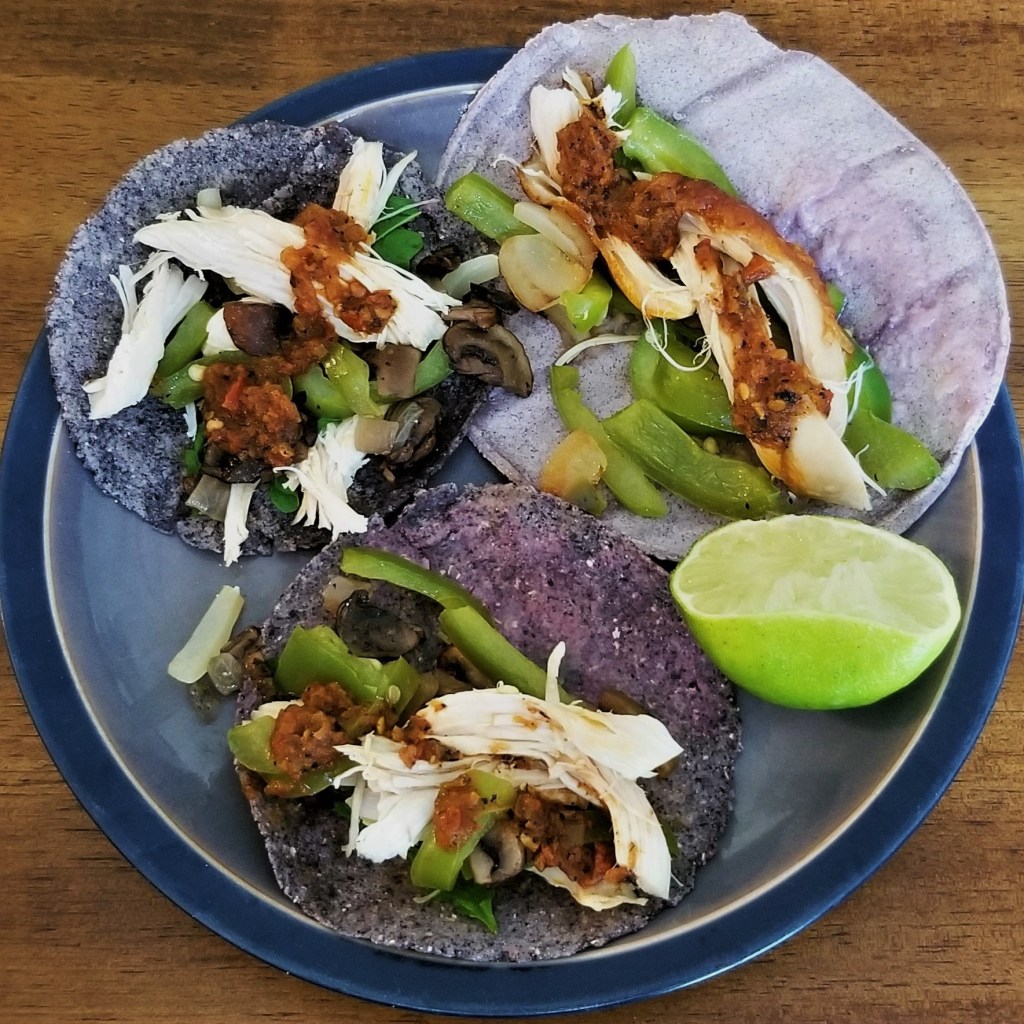
The flavour was similar (both delicious), but I really liked the coarser grind of the homemade batch, from the Maseca Azul™ flour. Maybe I have a bias because I made them myself, but I think overall I preferred the tortillas from flour over the packed ones.
As for the authenticity of blue corn, as opposed to food colouring added to ordinary corn, a sprinkle of an acidic substance, such as lime juice, will turn natural blue corn tortillas pink:
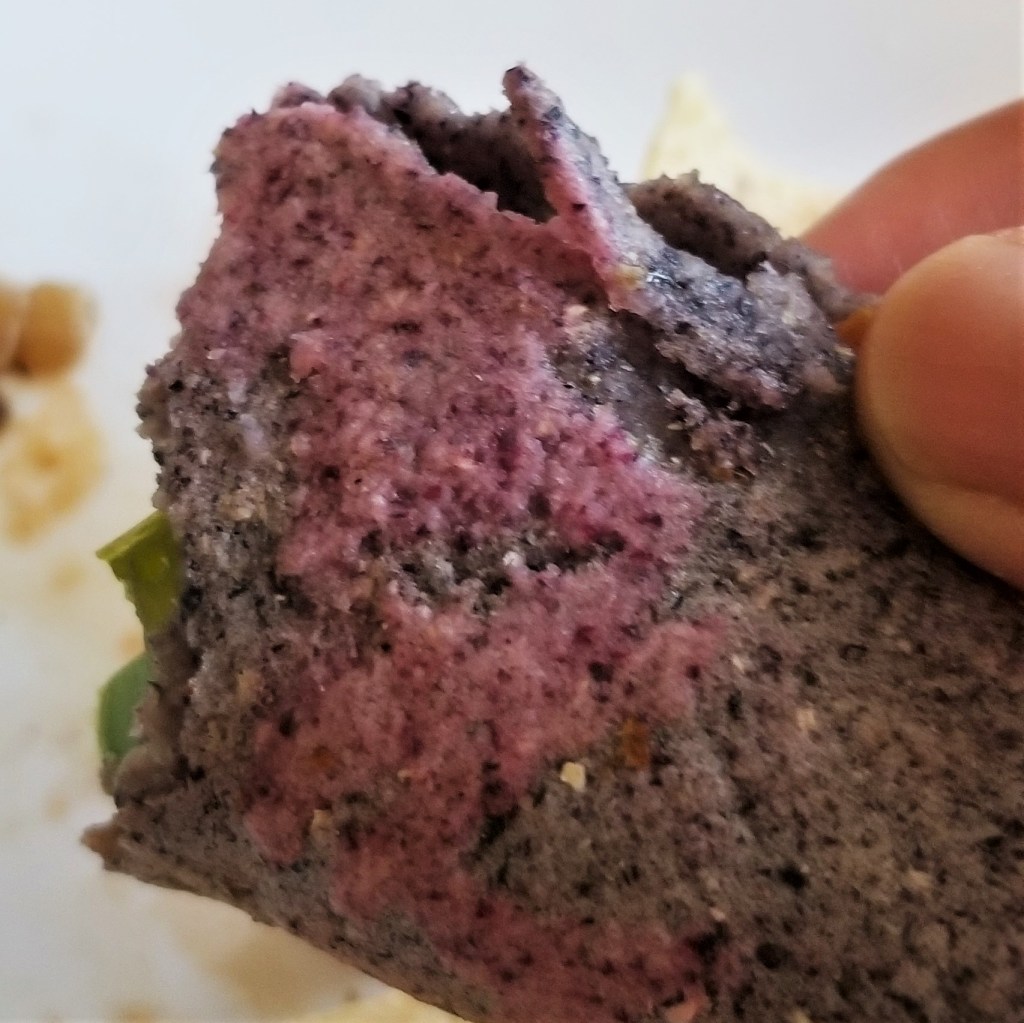
NOTE: Both kinds of tortillas “passed” the test, but it should be pointed out that this test only detects artificial colours, since other natural colouring substances, such as purple cabbage juice, will also turn pink when exposed to an acidic medium. The ingredient lists of both products were short, though, with blue corn as the first ingredient, and neither included colouring, artificial or natural.
Once the package of organic blue corn tortillas is opened, they need to be consumed within a couple of days, get frozen, or dried for chips, otherwise the tortillas will turn mouldy, and again, just like the short period before expiry date for the flour, I think it is ultimately a good sign for freshness and no preservatives added. I also keep my blue corn flour package wrapped in plastic in the fridge.
For your convenience, click on the highlighted text below for products available on Amazon™. DISCLAIMER: Any reviews included in this post are my own, for items I have purchased, not provided by any company; as an Amazon Associates Program affiliate, I might receive a commission for any purchases originated from the links below, at no extra cost to you. Thank you to readers who have bought other products starting with a click from my links!

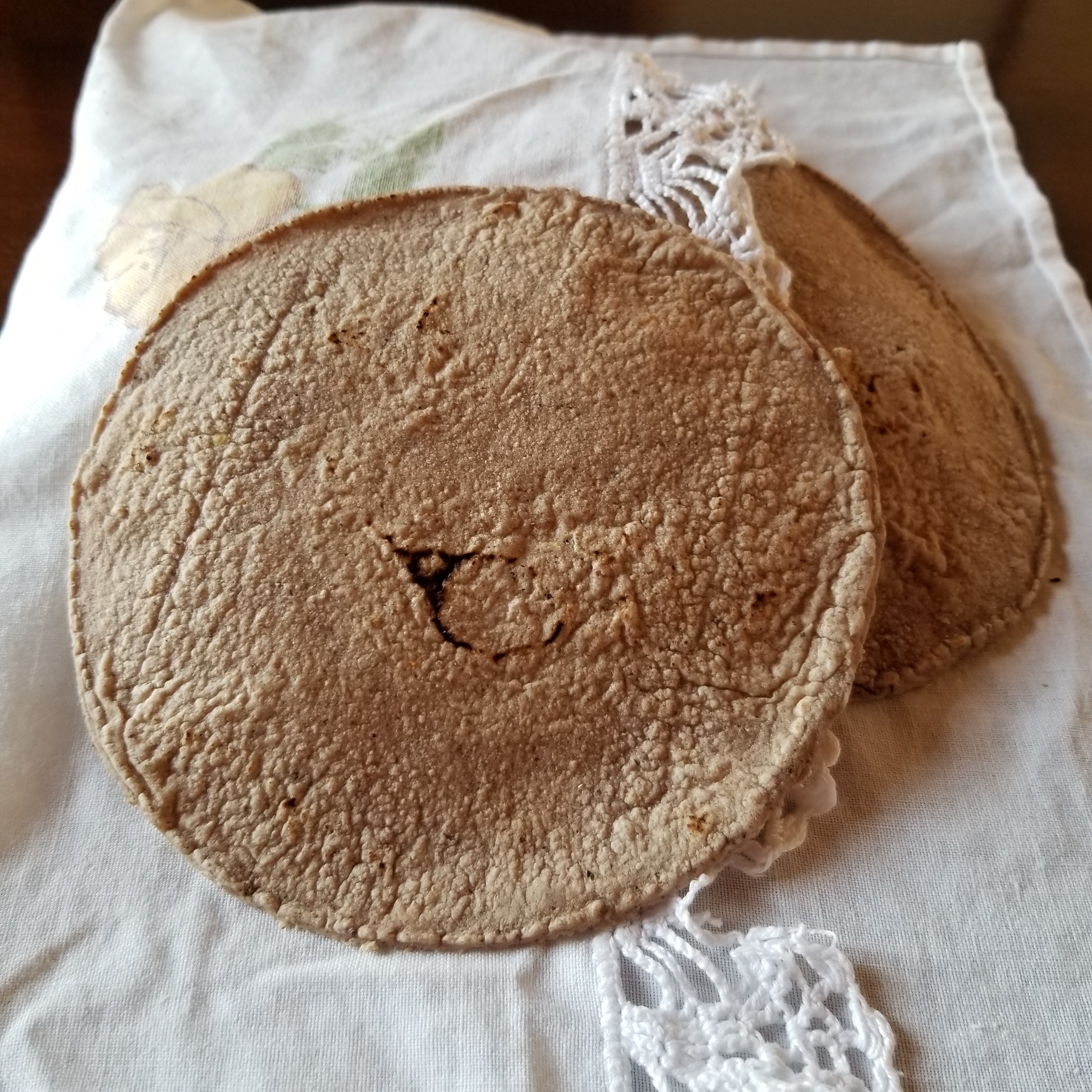
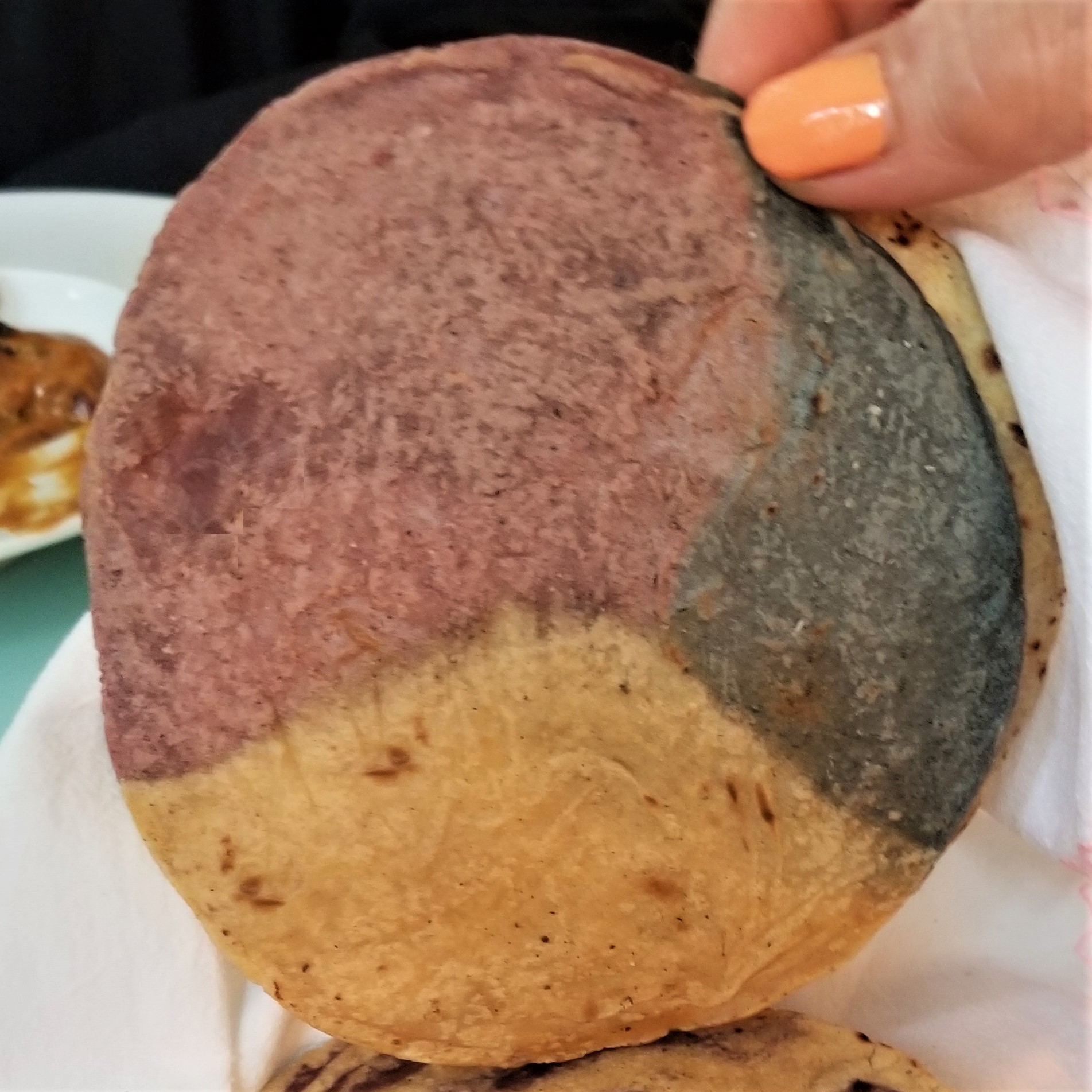
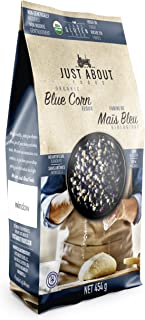









Part of me looks forward to the day when I will have time to make things like tortillas from scratch. For now, still store-bought!
LikeLiked by 1 person